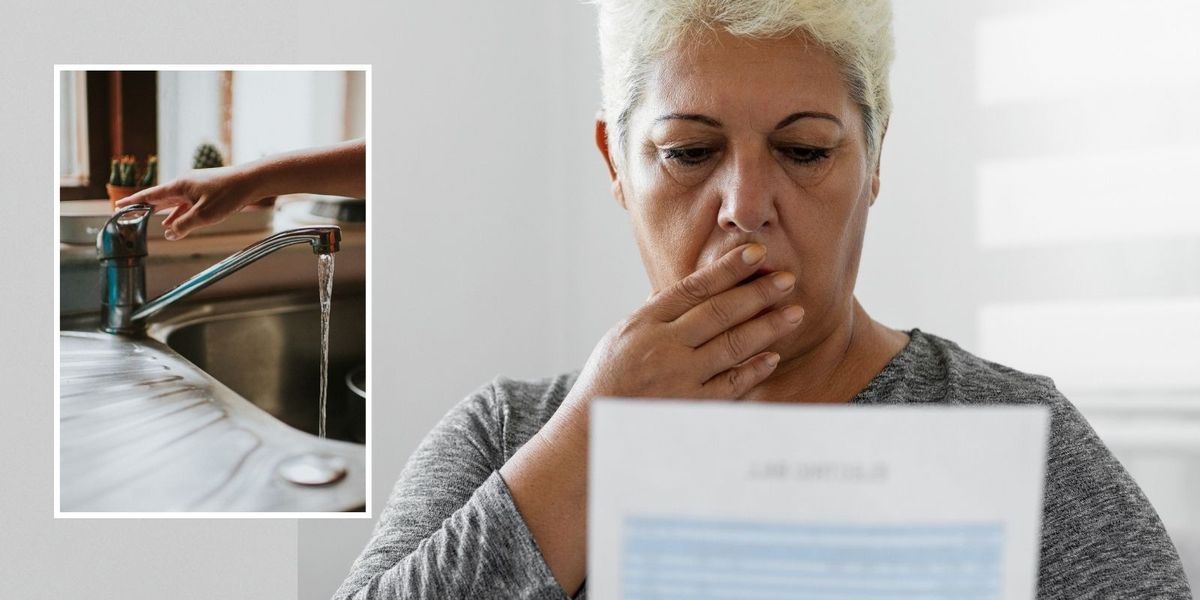Households are facing higher bills from this month, with the average water bill up six per cent.
These rising prices are putting further pressure on families, to find more ways they can cut their bills.
Following reports that Thames Water is in deep trouble, customers are warned their bills could face rises up to 40 per cent.
Chris Weston, Thames Water’s CEO explained that customers could face these steep increases as shareholders have backed out of plans to push £500million funding into the failing company.
Ministers have accepted that Thames Water bills will have to rise, as they seek to persuade investors to put more money into the troubled company.
Liz Hunter, director at Money Expert said: “A rise of 40 per cent could see average bills going up to nearly £700, would almost certainly push many already-struggling households into even further financial difficulty, and could result in many people being unable to pay for their water at all.
“The UK’s water system is ageing and in desperate need of maintenance and major repairs. Water companies also plan on building new facilities, such as reservoirs and water recycling plants.
“These upgrades, coupled with costly sewage cleanups, unpredictable rainfall and stricter environmental regulations, are the driving force behind the bill increases.”
Scottish households will see an increase of 8.8 per cent.
GETTY
Investors were set to invest almost £4billion into Thames Water over the next two years, but have withheld the first payment due to plans being ‘uninvestable’.
This investment would have certainly helped customers by keeping bills low, and would have vastly improved the services customers receive.
However, Thames Water are now “looking to their customers to foot the bill,” Ms Hunter said.
She continued: “This has angered ministers, who have already warned Thames Water that it’s not for customers to pick up the bill for their mismanagement.
“While the changes are necessary and investment very much needed, the timing of these increases couldn’t be worse for many families who are already facing higher energy bills, increasing rent and mortgage costs, and rising food prices.
“Overall, this news will ultimately leave customers worried, but scrutiny from regulators like Ofwat – who have already blocked further increases for now – and government intervention, including nationalisation, will ensure that the water supply and service provision remains reliable and fair for customers.”
From April 1, the average water bill increase is projected to be around £2.30 (six per cent) per month, but some regions and providers will see more significant jumps of up to 20 per cent, all of which will see households having to pay up to an extra £500 a year.
Scottish households will see an increase of 8.8 per cent.
How to reduce water bills
Ms Hunter shared ways Britons can cut their bills.
She said: “It’s important to remember that support is available for those on low incomes, and there are numerous ways to lower costs and become more water-conscious for those worried about increasing bills.”
· Consider moving to a meter
There are two ways to pay the water bill. People could be paying an estimated ‘unmetered charge’, which is based on their home’s size and/or value, if they don’t have a meter.
If they do have a meter, they pay based on their usage. Most new homes have a water meter installed.
If someone doesn’t currently have a meter and are paying an estimated bill, getting one could save them money if their property value is high, but water usage is low, if they have fewer occupants than bedrooms, or if they live alone.
· Choose water-efficient appliances
When people are next due to replace their washing machine, dishwasher or toilet, they are encouraged to choose water-efficient models, if they can.
These are specifically designed to use less water compared to traditional models.
When shopping, Britons can look for the WEL label (Water Efficiency Label). This will show a rating of between A (most efficient) to G (least efficient) based on the appliance’s water consumption. Aim for higher ratings (A+, A++, or A+++) for the biggest savings
LATEST DEVELOPMENTS:
· Wash full loads
Washing machines use a significant amount of water per cycle, regardless of the load size.
While usage varies, the Water Resources Council (WRC) estimates that washing machines account for approximately 15-20 per cent of average household water consumption.
For this reason, doing the washing only when there is a full load instantly translates to less water used, and therefore lower water bills.
It could also lead to savings on the electricity or gas bills.
· Check if you’re eligible for financial assistance such as social tariffs or WaterSure
Discounted water bills are offered by water companies throughout the UK to help low-income households afford their water. Schemes differ in terms of who is eligible for help and what assistance is provided.
However, they’re generally available to those that have a household income of less than £17,005 excluding benefits, or £21,749 if you live in a London Borough.
· Shorten your showers
· Choose showers over baths
· Turn off the tap whilst brushing your teeth
· Collect rainwater
· Contact your supplier
Ms Hunter encouraged those struggling with their water bills to get in touch with their supplier.
She said: “In most cases, they’ll be able to spread one’s payments over a longer period through a payment plan, to make things more manageable.”
In rare cases – and depending on the circumstances – it might be possible to have the debt written off, she said.
The finance expert concluded: “If you’re unsure how to approach the situation, you can contact Citizens Advice for advice. If you’re unhappy with how your water company has dealt with your financial hardship, you can also ask the Consumer Council for Water to investigate your behalf.”

